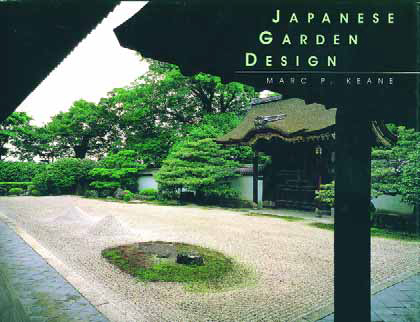ARTICLES
Advance Search
Aquatic Health
Aquatic Health, Fitness & Safety
Around the Internet
Aquatic Culture
Aquatic Technology
Artful Endeavors
Celebrity Corner
Life Aquatic
Must-See Watershapes
People with Cameras
Watershapes in the Headlines
Art/Architectural History
Book & Media Reviews
Commentaries, Interviews & Profiles
Concrete Science
Environment
Fountains
Geotechnical
Join the Dialogue
Landscape, Plants, Hardscape & Decks
Lighter Side
Ripples
Test Your Knowledge
The Aquatic Quiz
Other Waterfeatures (from birdbaths to lakes)
Outdoor Living, Fire Features, Amenities & Lighting
Plants
Ponds, Streams & Waterfalls
Pools & Spas
Professional Watershaping
Structures (Editor's Notes)
Travelogues & History
Water Chemistry
WaterShapes TV
WaterShapes World Blog
Web Links
Around the Internet
Aquatic Culture
Aquatic Technology
Artful Endeavors
Celebrity Corner
Life Aquatic
Must-See Watershapes
People with Cameras
Watershapes in the Headlines
I live in the Rocky Mountains of Colorado on the banks of the Arkansas River - a beautiful place and a beautiful river. Within easy reach of my home, the Arkansas flows swiftly in certain spaces, cascading over rugged terrain, then slows down in others to form deep pools that reflect brilliant skies and create a diversity of aquatic habitats. As I watch the river flow, sometimes I can't help thinking back to my days at a trout hatchery and recognizing that if we'd had such a volume of moving water available to us in our operation, we could have produced millions more pounds of healthy fish. I'm simply amazed by the power and complexity of the water I watch, and especially by its ability to
I'm amazed at how few watershapers keep the size and shape of the average body in mind or consider the science of ergonomics when they design projects for their clients. Just think about how much more we can do to increase their comfort and enjoyment by doing so, particularly when it comes to custom concrete spas. Take a look at the average spa attached to the typical pool: On a great many of them, you'll see a cantilevered deck around the edges. From the perspective of
We've spent a lot of time in these columns talking about ways of adding dimension and interest to gardens by using different planting styles and arrangements and by varying color, texture, size, quantity and other planted features of the design. As yet, however, we haven't spent any time at all on one of the easiest and potentially most interesting ways of giving a design a unique character - one that virtually forces visitors to remember your garden. It's all about containers and accessories. As simple as it seems, adding containers and other accessories - anything from simple terra cotta pots or stone benches to elaborately custom-built planter boxes or beautifully detailed garden statuary - can add marks of
I've always been excited by innovation. I place creativity high on my list of aspirations and priorities in my own business, and I think my life gets most interesting when I'm involved with people who are similarly attuned to this desire to do and try new and interesting things. Fortunately, I've had the benefit of associating with highly innovative people through the years who've shared the creative process with me, taught me a lot and made the ride extremely enjoyable - and fruitful. These experiences have filled me with a desire to be out front myself with innovative and creative ideas. I often wonder where we would all be if some of us weren't willing to
There's a fascinating conceptual relationship between man-made bodies of water and those created by nature. On the one hand, the most accomplished
It all begins with the water. The first thing anyone approaching the world of ponds needs to understand is that life-supporting water is quite unlike the sterile water found in swimming pools or spas or many other watershapes. A second and related point is that clear water is not necessarily healthy water when it comes to the needs of the inhabitants of the pond. For a pond to be healthy, its water must meet the chemical requirements of plants and fish by having an abundance of some things (such as nutrients) and a near-total lack of other things (such as pollutants). Sanitized water may be beautifully clear, but the fact that sterile systems are designed to knock out nutrients and work chemically because they are "polluted" with chlorine and algaecides makes them completely unsuitable as life-supporting ecosystems. The goal with ponds is to work with nature in balancing the life-sustaining features of the water - and to set things up in such a way that maintaining that balance will be something your clients can do long after you've moved along to another project. To do so, you need to embrace the water-quality basics outlined in the last issue of
An important part of creating beautiful commercial watershapes is designing systems that actually work, effectively and enduringly, within the requirements and constraints of their given settings. This has become a real issue in the fountain business, where new demand is popping up at locations as diverse as resorts, malls, hotels, art pavilions, office buildings, convention centers, museums and even restaurants - and a few too many good-looking designs have been pulled out, significantly downsized or turned into planters because they just haven't performed as needed or
Everyone is concerned these days about electricity, gasoline and natural gas and all other forms of energy. What is amazing is that, despite this surge in interest, very few people have considered ways in which swimming pools can be built to reduce the energy required to heat them - and by substantial amounts. This dearth of energy consciousness has nothing to do with the manufacturers of heating equipment. It's fair to say that most heater manufacturers - whether they pursue combustion heating with fossil fuel, compression heating with heat pumps or passive heating with radiant solar, absorbent solar panels or solar covers - all have optimized their own products and made them remarkably energy-efficient. The same is true of recirculation systems: Pumps of all kinds are optimized to very high efficiencies, and the pool and spa industry has made positive improvements in acknowledging the necessities of hydraulic efficiency (although it's fair to say we
Interactive watershapes are all about invitations to play. For designers, interactive watershapes provide invitations to use water and the control of flowing water to create unique play environments. For children, teenagers, parents and other adults, they are invitations to play with one another in a safe and exciting aquatic playground. It's a form of invitation that's rapidly gaining popularity in an era when playtime for both children and adults has become excessively passive and dominated by surfing the net, playing computer games or staying glued to
If you've been looking for a well-written, beautifully illustrated book that cracks the code when it comes to the design principles of Japanese gardening and introduces the full range of styles found in this ancient art form, you can't go wrong with Japanese Garden Design. Written by designer Marc P. Keane (and published by Charles E. Tuttle in 1996 but still in print), the book offers a detailed examination of this most influential of styles. For watershapers, landscape designers and






















